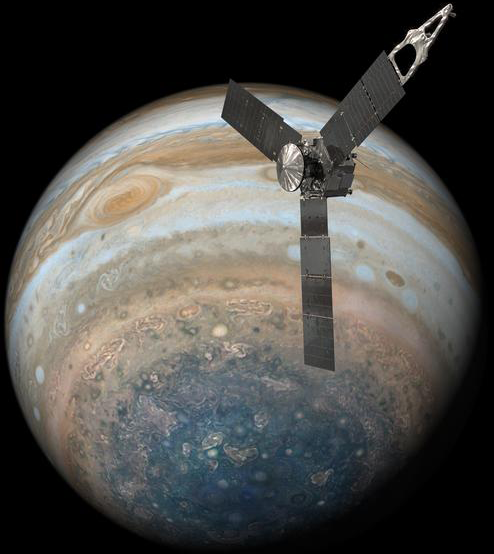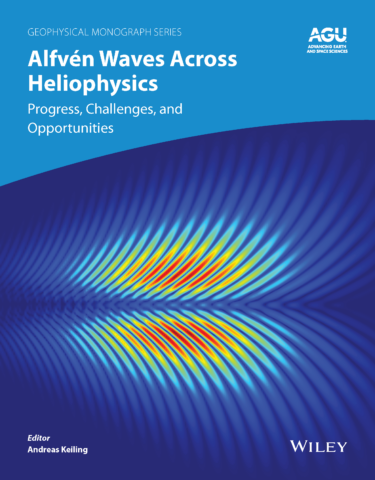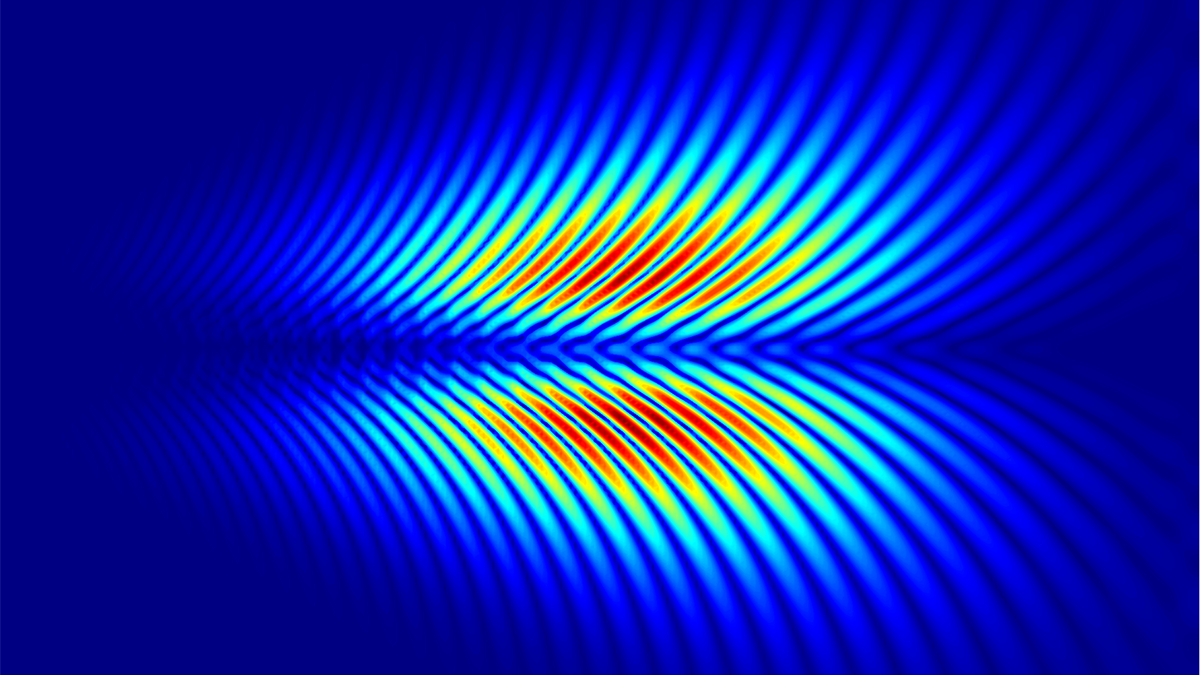Editors’ Vox is a blog from AGU’s Publications Department.
Alfvén waves are fundamental to the dynamics of space plasmas. New space missions, sophisticated rocket campaigns, and advances in radar networks and computer modeling have grown our understanding of these waves, bringing us closer to answering some of the most important questions in space physics.
A new book in AGU’s Geophysical Monograph Series, Alfvén Waves Across Heliophysics: Progress, Challenges, and Opportunities, takes an interdisciplinary approach to Alfvén waves, exploring recent and current research from the solar, planetary, and terrestrial sciences. We asked the book’s editor to explain Alfvén waves, their significance to studying the Sun and solar system, and the latest developments in Alfvén wave research.
In simple terms, what are Alfvén waves?
Generally speaking, in any kind of wave something oscillates and something propagates. These two properties can also be found in Alfvén waves. Since an Alfvén wave belongs to a class of waves called electromagnetic waves, it is the electric and magnetic fields which oscillate. In addition, the plasma in which Alfvén waves travel oscillates as well. So, what is propagating? As with all waves, energy propagates with an Alfvén wave.
Take a simple piece of string as an everyday example. When you move your hand and send a wave down the string, you are sending out a disturbance, which carries kinetic energy. Alfvén waves, on the other hand, travel along magnetic field lines in outer space and carry electromagnetic energy. A popular mental image of Alfvén waves, even used by scientists, is the presence of “wiggles” on the magnetic field lines that appear to be traveling. We cannot see the wiggles with our eyes at Earth or other planets, but they can be recorded with instruments. In contrast, in the solar corona, it is actually possible to image the wiggles on coronal loops.
Why are Alfvén waves important for the study of the Sun and solar system?
Broadly speaking, the study of the Sun and the solar system is a study of how energy flows and how energy is redistributed. Alfvén waves play a hugely important role in that. For example, Alfvén waves can carry energy over very long distances, by which they connect remote regions in outer space.
Alfvén wave research is also related to improving understanding and forecasting of space weather that pervades the solar system.
Alfvén waves accelerate charged particles and heat plasma to high energy; how exactly that occurs is one of the most important problems of heliospheric physics to solve. Ultimately, Alfvén wave research is also related to improving understanding and forecasting of space weather that pervades the solar system.
How does bringing together research from the solar, planetary, and terrestrial sciences further the study of Alfvén waves?
The Alfvén wave is a universal phenomenon; that is, it occurs throughout the universe. If we look at our solar system, it comprises many different environments. The Sun is bigger, hotter, and obviously very different from the planets. Equally, not all planets are alike. Nonetheless, Alfvén waves exist at these celestial bodies.
It is terrestrial science that has the longest history of recording Alfvén waves, and planetary and solar scientists are fully aware of the terrestrial results and make comparisons. That way, the different science communities can learn how these waves operate and under what conditions by studying how processes vary with environmental conditions.
How have new spacecraft missions advanced Alfvén wave research?

Let me give two examples. The current Juno mission is on a completely different orbit around Jupiter than previous satellites. It flies over both the northern and southern poles of Jupiter. Near the poles are the auroral zones, where auroras occur. Alfvén waves are an integral part of the terrestrial auroral zone, so we expected to learn about Alfvén waves at Jupiter’s auroral zone. And we did, but we were also in for a surprise.
Similarly, the solar physics community has sent a spacecraft closer to the surface of the Sun than ever before. Again, we were full of expectations to make great discoveries, and we were not disappointed. Findings from both missions—and others—are shared in this book.
What are some of the most exciting advances in Alfvén wave research presented in your book?
The solar and planetary sciences have recently produced the most significant advances thanks to new space missions and new instruments. The number of studies about Alfvén waves and related phenomena in the solar atmosphere and Jupiter have exploded. For example, it was a surprise that the Alfvén wave activity related to Jupiter’s aurora was more dominant than other mechanisms creating auroras, if compared to Earth.
It is now widely acknowledged that the action of Alfvén waves is crucial in the workings of solar flares.
Also, owing to advances in simulation and observing capabilities, it is now widely acknowledged that the action of Alfvén waves is crucial in the workings of solar flares. The reader will find many more exciting advances in this book.
What do you imagine will be the latest developments in Alfvén wave research reported in another book 10 years from now?
We will have come closer to a full understanding of what exactly generates Alfvén waves in many different situations—for example, solar flares—and how much energy the waves contribute to puzzling phenomena such as coronal heating, which remains a challenge. Laboratory experiments will continue to provide essential tests of Alfvén waves in support of space plasma theory and simulation. And in 10 years, we will have better incorporated the impacts of Alfvén waves into space weather models.
How is this book organized, and for whom is it written?
This book reviews Alfvén wave physics in various regions of the heliosphere. To provide structure, the book is divided into three main parts dealing separately with Alfvén waves at the Sun (Part I), the inner and outer planets except for Earth (Part II), and Earth (Part III). In addition, some chapters take a comparative approach by comparing Alfvén waves at Earth with those at the Sun and Jupiter. There is also a chapter that reviews results from laboratory experiments and the insights they have generated for understanding Alfvén waves in space.

I hope that this book will serve as a reference book for today’s and future generations of space scientists, including graduate students. Because of its interdisciplinary nature, this book should appeal to a broad community of space scientists, and it should also be of interest to astronomers and astrophysicists who are studying space plasmas beyond our solar system.
Alfvén Waves Across Heliophysics: Progress, Challenges, and Opportunities, 2024. ISBN: 978-1-394-19595-4. List price: $210.00 (hardcover)
Chapter 1 is freely available. Visit the book’s page on Wiley.com and click on “Read an Excerpt” below the cover image.
—Andreas Keiling ([email protected]; ![]() 0000-0002-8710-5344), University of California, Berkeley, USA
0000-0002-8710-5344), University of California, Berkeley, USA
Editor’s Note: It is the policy of AGU Publications to invite the authors or editors of newly published books to write a summary for Eos Editors’ Vox.

